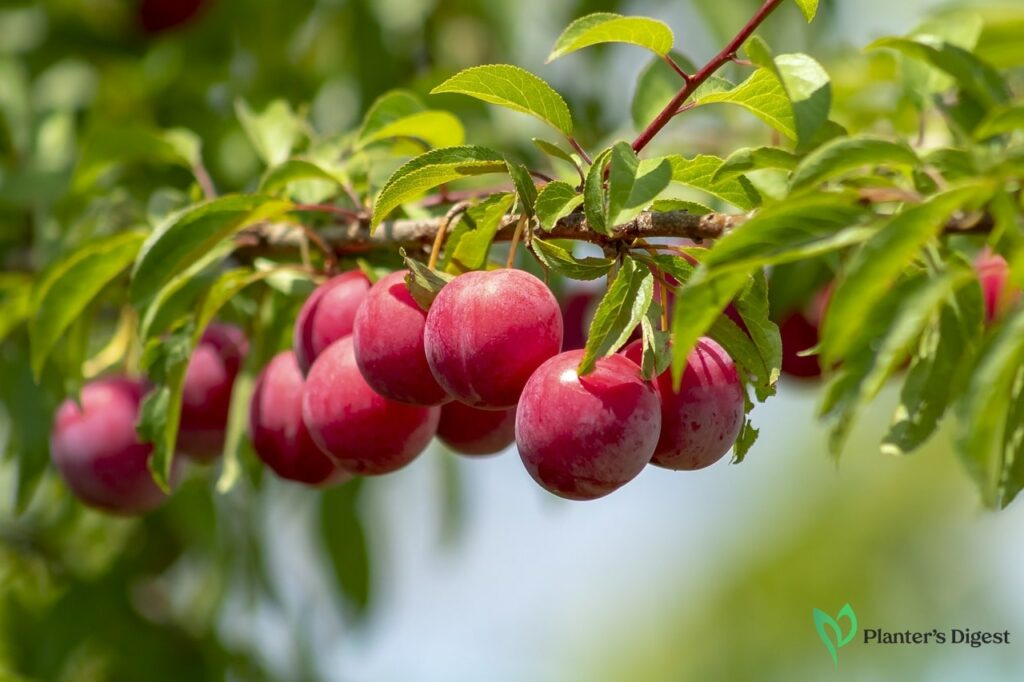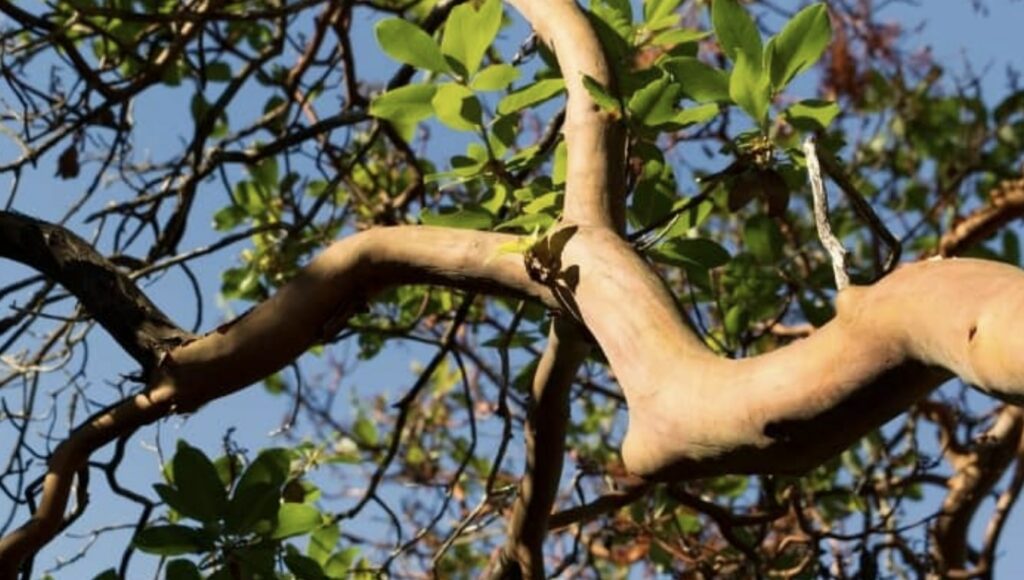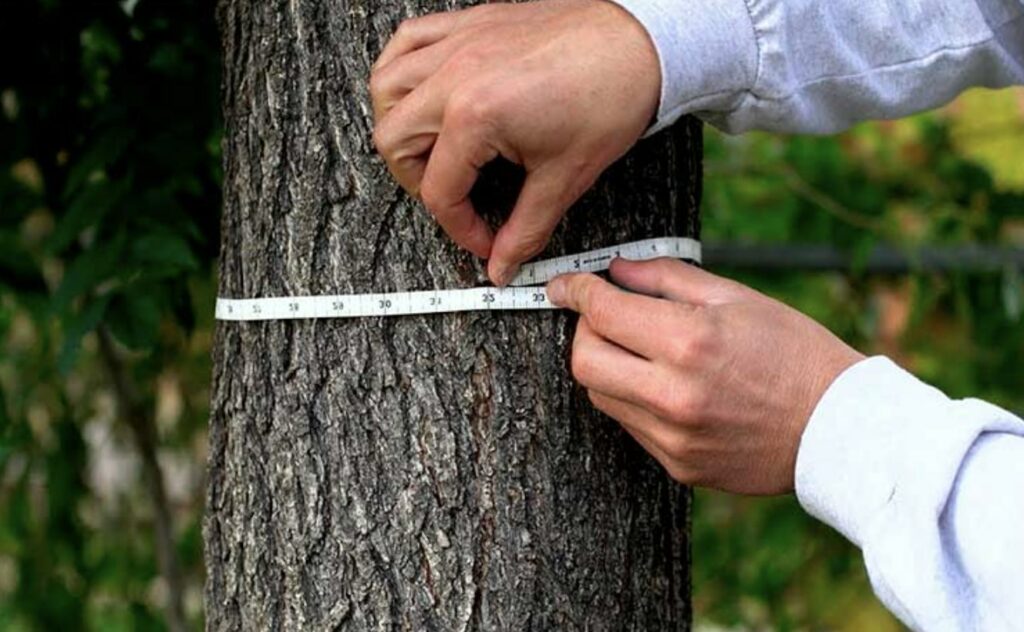Plant-based food has become a popular diet fad, and plums are one of the most versatile fruits you can add to your diet. They’re filled with vitamins, minerals and antioxidants, and you can use them in sweet and savory dishes.
Whether you’re planning to plant a plum tree or already have one in your yard, we’re here to make sure your tree bears fruit. Read on to learn about the best practices in growing a healthy and fruiting plum tree.
When does a plum tree bear fruit?
A plum tree bears fruit within three to six years after planting. They flower during spring and produce fruit between June and September, depending on the variety, climate and other growing conditions.
For instance, dwarf varieties can bear fruit as early as two years old, while large types can take six years before fruiting. The climate also affects plum tree fruiting since those grown in warmer climates bear fruit earlier than those in colder climates.
When do dwarf plum trees produce fruit?
Dwarf plum trees typically produce fruit within two to five years from planting, earlier than standard-sized plum varieties.
Although their size restricts the number of fruits they produce, dwarf plum trees are advisable if you want a manageable tree for a small garden space or if you want to harvest plums a little sooner.
Do plum trees produce fruit every year?
Plum trees do not produce fruit yearly because they need the first three to six years to mature enough to bear fruit.
However, even after reaching full maturity, a plum tree may still not bear fruit yearly due to excessive fruit production in the past year, too much wood production or frost damage.
For instance, frost injury will cause wilting of flowers, over pruning branches and overfertilization, which can delay fruit production for a year or more.
Biennial or alternate-bearing plum tree varieties also naturally flower and produce fruit every other year. A biennial-bearing tree usually takes a year to recover all the energy and nutrition it used to produce a large yield in the past year.
How much fruit does a plum tree produce?
A mature plum tree produces 100 to 200 pounds of fruit yearly depending on the tree variety climate, tree age and growing conditions.
Plums usually come in red, purple or yellow-green with sweet, tangy and juicy flesh. These trees can live for 20 to 30 years and grow up to 25 feet tall.
Here’s a table summarizing the fruit yield of different plum tree varieties in bushels (per 50 pounds) or by pounds per year.
| Plum Variety | Yield in Bushels | Yield in Pounds |
| Dwarf Japanese Plum Tree | 0.5 to 2 | 25 to 100 |
| Standard Japanese Plum Tree | 2 to 4 | 100 to 200 |
| Dwarf European Plum Tree | 1 to 2 | 50 to 100 |
| Standard European Plum Tree | 3 to 6 | 150 to 300 |
Why are there no fruits in my plum tree?
There are no fruits in your plum tree because of a lack of pollination, insufficient chilling, bad weather, pest infestation and plant diseases. It also fails to bear fruit due to overfertilization, alternate bearing and pruning mistakes.
Let’s discuss each of these factors and how to fix them.
1. Lack of Pollination
How To Fix: Plant different plum varieties at the same time.
The best plum tree pollinators are insects, especially honey bees. Without them, there will be no cross-pollination or fruiting for the plum tree.
Weather also affects pollination since rainy, cloudy or windy days during the tree’s flowering period will lessen bees’ productivity and result in lower plum yield.
Even with enough pollinators, many plum trees are self-incompatible and require cross-pollination from a different plum to bear fruit.
But remember, there are two main types of cultivated plum trees – the Japanese and European varieties. They cannot cross-pollinate, which means only two varieties from the same group can pollinate each other.
To produce a large yield, there must be another plum tree variety flowering at the same time within 50 feet or less and active pollinators to do the transferring.
Solution: Plant different plum varieties at the same time.
| Difficulty | Average ●●○○○ |
| Speed | Slow-acting |
| Things You Need | Two plum varieties |
To ensure pollination and maximum yield, you should plant two plum varieties that flower simultaneously.
Make sure they’re Japanese or European varieties but not a mixture of these plum trees. The trees must be cross-compatible so that the pollinators can transfer enough pollen for the tree to set fruit.
Here’s a table of different Japanese and European plum varieties and their flowering time.
| Japanese Plum Variety | Flowering Time | European Plum Variety | Flowering Time |
| Shiro | Early April | Stanley | Late April |
| Santa Rosa | Early April | Victoria | Late April |
| Burbank | Mid-April | Greengage | Late April |
| Methley | Mid-April | Opal | Early May |
| Black Beauty | Late April | Blue Damson | Early May |
| Ozark Premier | Late April | Warwickshire Drooper | Early May |
| Friar | Early May | Czar | Early May |
| Satsuma | Early May | Merton Gage | Early May |
| Elephant Heart | Mid-May | Pershore | Early May |
| Beauty | Mid-May | Early Transparent Gage | Early May |
| Late Santa Rosa | Late May | Belle de Louvain | Early May |
2. Insufficient Chilling Hours
How To Fix: Apply chilling treatments to the plum tree.
Plum trees require chilling hours or cooling temperatures during winter before they bloom in spring. If this growing condition is not met, the plum tree may not produce flowers or bloom too early, only to be destroyed by the frost.
These chilling hours refer to the total number of hours when the temperature is 32 to 45 degrees Fahrenheit. Japanese plum varieties need 500 to 900 chilling hours, while European plums require 700 to 1,000.
Solution: Apply chilling treatments to the plum tree.
| Difficulty | Average ●●○○○ |
| Speed | Slow-acting |
| Things You Need | Dormant oil spray Burlap Twine Scissors |
The two most effective chilling treatments for plum trees are dormant oil sprays or tree wrapping.
Dormant oil sprays are insecticides applied to plum trees in the late fall or early winter. It helps kill overwintering insects and pests and increases the chilling hours the plum tree receives.
On the other hand, tree wrapping helps insulate the tree from cold winds and frost and increases its chilling hours. You can wrap your tree with burlap or any insulation material and secure it with a twine.
3. Bad Weather
How To Fix: Cover the plum tree from bad weather.
Frost, heavy rain and strong winds can also damage plum trees and disrupt their fruit production process. These bad weather conditions damage the tree’s fruits and flowers.
They can prevent the tree from fruiting or reduce the size and quality of its fruits. They can also knock the plums off the tree before it even ripens.
Solution: Cover the plum tree from bad weather.
| Difficulty | Average ●●○○○ |
| Speed | Slow-acting |
| Things You Need | Burlap Blanket Stakes |
Wrapping the plum tree in burlap, blanket, or other insulation materials will help keep the tree warm and protect it from frost and wind damage. Just make sure to remove the cover in the morning so the tree will still get the sunlight it needs.
You can also stake the tree so it has sturdy support against strong winds and prevent it from being blown over.
4. Pest Infestations
How To Fix: Apply pesticide on the plum tree.
Pest infestations lead to insects feeding on the branches and flowers of plum trees and no fruits. Some of these plum tree pests are Plum sawflies, mites, scale insects, aphids and moths.
There’s also the plum curculio (Conotrachelus nenuphar), a small beetle that
lays eggs within developing plums and causes them to drop prematurely. Infected fruits develop small crescent-shaped blemishes and will harden.
Solution: Apply pesticide on the plum tree.
| Difficulty | Average ●●○○○ |
| Speed | Slow-acting |
| Things You Need | Pesticide Gloves Soapy water |
It’s always best to regularly check your plum tree for pests, especially the undersides of fruits and leaves. Once you see these insects, their eggs or larvae in any plant part, immediately spray pesticide on your plum tree.
However, we recommend applying pesticide until after the flower petals drop so it won’t kill beneficial pollinating insects. After, apply pesticide every 10 to 14 days until all pests are gone.
If you can manually remove them from the tree, wear gloves and dump them into a pail of soapy water.
5. Plant Diseases
How To Fix:
Option 1: Apply copper fungicide.
Option 2: Water the plum tree consistently.
The most common plant diseases that infect plum trees are brown rot, black knot and powdery mildew. They affect the blossoms, fruit or branches of plum trees, causing fruits to drop and stunt their overall growth.
For instance, brown rot is caused by the fungus Monilinia fructicola and covers the plum tree’s flowers, fruits, twigs and branches with a dark brown slime. Later, the plums will soften, shrivel and rot until they all drop off the tree.
In black knots, abnormal growth on the tree’s bark, twigs, or branches develops and produces large cankers. This fatal plant disease can quickly spread in gardens over winter.
Finally, powdery mildew produces a white substance on the leaves and branches of the plum trees. This infection will spread and cause leaves to curl upwards and plums to develop dark spots.
Option 1: Apply copper fungicide
| Difficulty | Average ●●○○○ |
| Speed | Slow-acting |
| Things You Need | Copper fungicide |
Copper-based fungicides offer immediate protection to plant trees. It’s essential to shield your plum trees from plant diseases because they won’t just affect your plum yield but can also easily spread in your garden.
It’s best to apply copper-based fungicide during early spring because the pink buds have not opened yet. You can repeat the fungicide application three weeks before harvesting your plums to make sure you’ll get a healthy and productive yield.
Option 2: Water the plum tree consistently.
| Difficulty | Average ●●○○○ |
| Speed | Slow-acting |
| Things You Need | Watering can |
During your plum tree’s first growing season, make sure to water them frequently and that water is directed to the plant’s root zone.
Always wait for the soil to dry out before watering again. This will help its root system to grow wider and deeper and help it survive drought or neglect.
You can reduce watering during winter to prevent root rot and other fungal diseases. But gradually increase watering again during flowering and fruiting.
6. Overfertilizing
How To Fix: Conduct a soil test and amend the soil.
Nitrogen helps plum trees develop leafy, vegetative growth. However, too much of this nutrient will cause the tree to put all its energy into producing new leaves and branches instead of flowering and fruiting.
Overfertilizing can also cause fertilizer burn, where roots get damaged, making it difficult for trees to absorb water and nutrients.
Solution: Conduct a soil test and amend the soil.
| Difficulty | Average ●●○○○ |
| Speed | Slow-acting |
| Things You Need | Soil test kit Slow-release fertilizer Compost Mulch |
Begin by conducting a soil test to determine which nutrients are missing. Then, apply a slow-release fertilizer with more of the deficient nutrient to prevent the tree from being overfertilized.
Add compost to keep your soil healthy because it will provide organic material and nutrients for your plum tree without risking fertilizer burn. The great thing about it is it’s budget-friendly since you can make it yourself using your yard and kitchen waste.
Finally, add mulch at least three feet around the tree’s base to keep the soil moist and prevent weed growth in your garden.
7. Alternate Bearing
How To Fix: Apply fruit thinning.
Alternate bearing occurs when plum trees bear fruits heavily in one year but produce few to no plums the following year. This is usually caused by the plum tree’s variety, climate and growing conditions.
It takes at least a year for a plum tree to recover all the energy and nutrition it used to produce a large yield in the past year.
Solution
| Difficulty | Average ●●○○○ |
| Speed | Slow-acting |
| Things You Need | Ladder Shears Bucket |
If you want to avoid biennial bearing in your plum trees, apply fruit thinning where you leave one plum every 3 to 4 inches along a branch. It will also help the tree produce larger and more flavorful fruits.
Fruit thinning for plum trees is best done in mid to late June and July after the fruit has set. Additionally, Japanese plum varieties often need fruit thinning compared with European and American Hybrid varieties.
How To Do
1. Climb the ladder.
2. Inspect the tree’s fruit clusters and select the largest and healthiest clusters.
3. Remove the excess fruit clusters so there is only one fruit every three to 4 inches of branch.
8. Pruning Mistakes
How To Fix: Prune the plum tree correctly.
Pruning is highly recommended for plum trees to prevent broken branches or alternate bearings. This gardening practice is best done at 10 or 2 o’clock pruning angles in spring or summer.
Annual pruning will lead to bigger plums and help free the plum tree from pests and diseases like aphids and silver leaf disease. However, you shouldn’t prune too early or late because you can eliminate the flower buds and disrupt the tree’s fruiting.
Solution: Prune the plum tree correctly.
| Difficulty | Average ●●○○○ |
| Speed | Slow-acting |
| Things You Need | Pruning shears Ladder |
How To Do
1. Prune in the late winter or early spring before the tree buds out. Remove dead, diseased, or damaged branches.
2. Thin out crowded branches. Shape the tree to your desired form, such as into a central leader or open vase form.
3. Make cuts just above a bud, facing where you want the new growth.
4. Slant cuts away from the tree trunk to prevent water from collecting on the cut surface and rotting the wood.
5. Seal cuts on larger branches with pruning paint to prevent pests and diseases from entering the tree.
Harvesting Plums
Harvesting plums depends on the variety. American hybrid and European plums are ready for harvest when the fruit’s skin feels soft when lightly squeezed and easily detaches from the branch when twisted.
On the other hand, Japanese plums have a slightly early harvest date, when the fruit is well-colored but only somewhat soft to the touch. Unlike different immediately edible varieties, Japanese plums take a few days to ripen indoors.
Since plums don’t last long, you can store them in the refrigerator for up to a week to extend their shelf life. When stored at 3 to 32 degrees Fahrenheit with a relative humidity of 90 to 95%, plums can last for 2 to 4 weeks.
You can also store them with ethylene-producing fruits like pear, banana, and apple in a paper bag to speed up the ripening process.
What are the kinds of plum trees?
Here are the types of plum trees you can plant in your backyard.
| Plum Variety | USDA Hardiness Zone | Fruit Maturity Month/s | Beginning of Fruiting Years |
| Damson Plum | Zones 5 to 7 | August | 3 to 6 years |
| Mann Sour Plum | Zones 5 to 8 | Mid-June | 3 to 6 years |
| Ozark Premier Plum | Zones 5 to 9 | Mid-August | 3 to 6 years |
| Santa Rosa Plum | Zones 5 to 9 | July | 3 to 6 years |
| Stanley Prune Plum | Stanley Prune Plum | Early September | 3 to 6 years |
| Starking Delicious Plum | Zones 5 to 9 | Early August | 3 to 6 years |
FAQs on Fruiting Plum Tree
A plum tree may produce fruit as early as June and September.
You need two plum trees to produce if you planted an unfruitful variety. These varieties require cross-pollination with another plum tree of a different type to produce fruit.
Plum trees need at least six hours of direct sunlight daily to produce a large and healthy crop. Plum trees planted under indirect sunlight may grow but bear fewer fruits.
The ideal soil condition for plum trees is light, loamy, well-draining soil with a pH of 6.0 to 6.8.
Plums fall off the tree before they ripen because of pests, disease, strong winds, too much or too little water, lack of nutrients, poor drainage, weed competition, and excessive shade.
Plum trees live between 20 and 30 years on average but can be shortened when a storm strikes or is infested by pests or illness.





